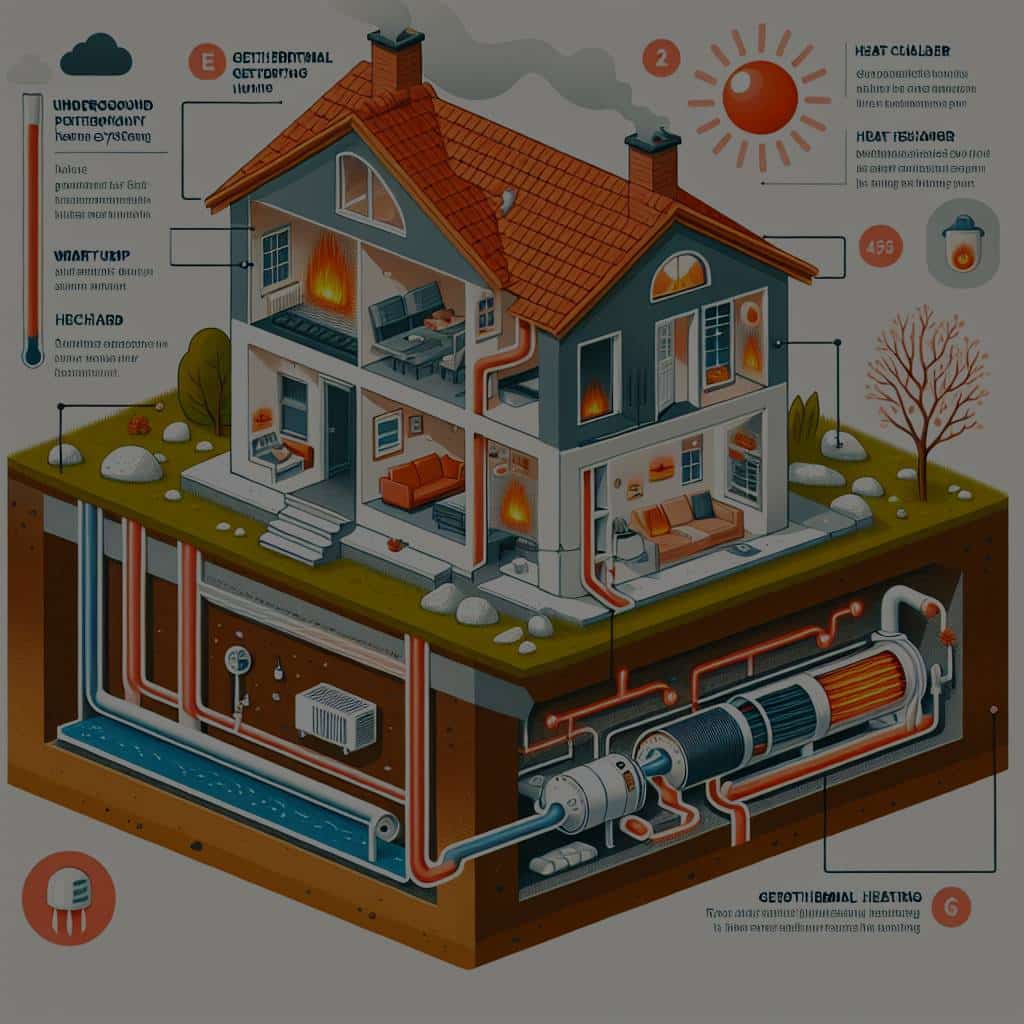What’s the Best Way to Incorporate Eco-Friendly Geothermal Heating into a Home Renovation?

As we continue to contend with the realities of climate change, pursuing eco-friendly solutions for our daily needs is crucial. One area in which we can make substantial changes is our homes. Implementing more efficient, green energy systems can have a substantial impact on our carbon footprint and energy costs. A standout solution in this area is geothermal heating. In this article, we’ll explore how you can incorporate this efficient and environmentally friendly heating and cooling system into your home renovation project.
Understanding Geothermal Energy Systems
Before we delve into the specifics of incorporating geothermal heating into your renovation, it’s essential to get a basic understanding of how it works.
This might interest you : What Are the Practical Steps for Setting Up a Work-from-Home Station in a Studio Apartment?
Geothermal energy systems leverage the constant temperature of the earth just a few feet underground as a source of heat or cool air. They achieve this through a heat pump that is connected to a ground loop— a network of water-filled pipes buried underneath your home. During winter months, the pump extracts heat from the ground and transfers it to your home, while in the summer, the process is reversed, providing cooling.
Unlike traditional heating and cooling systems that burn fossil fuels like gas or oil, geothermal systems are powered by the earth’s natural, renewable energy. This leads to less energy consumption and lower utility bills. Moreover, they are incredibly efficient, quiet, and require less maintenance than conventional systems.
In parallel : How to Choose the Perfect Palette for a Serene Coastal Themed Living Room?
Incorporating Geothermal Heating During Home Renovation
Integrating geothermal heating into a home renovation requires thoughtful planning. The first step is to assess your property and its suitability for a geothermal installation.
The size and geology of your property, the condition of the soil, as well as the local climate, will all factor into this evaluation. A well-draining soil is ideal for the installation of a ground loop, while rocky or clay soils might pose challenges. You also need to consider the space available for the ground loop. If you have a smaller property, you might need to opt for a vertical loop system, which is drilled deep into the ground, rather than a horizontal loop system, which requires more surface area.
After the assessment and deciding on the type of loop system, the next step would be to integrate it into the home’s existing heating and cooling system. This might involve upgrading to a more efficient distribution system such as radiant floor heating or ductwork designed for low-temperature distribution.
The Costs Involved
While the benefits of geothermal heating are significant, it’s important to factor in the initial costs of installation. The cost can vary widely depending on various factors, including the size of your property, the type of ground loop system you choose, and local installation costs.
Despite the upfront expenses, the long-term savings can be considerable. Geothermal systems are incredibly efficient, with some offering up to 400% efficiency. This means that for every unit of electricity used to operate the system, four units of heat energy are produced. Over time, the reduction in utility bills can more than offset the initial cost. Additionally, many countries offer incentives and rebates for installing geothermal systems, further reducing the overall cost.
The Impact on Home Value
Incorporating a geothermal heating system into your home can increase its value significantly. It’s an attractive feature for potential buyers who are looking for an energy-efficient and environmentally friendly home.
A study by the U.S. Department of Energy found that homes with geothermal heating systems sell for an average of 5.3% more than comparable homes with conventional systems. Moreover, these homes tend to sell faster, as more buyers are becoming aware of the benefits of geothermal energy and are seeking out homes that already have these systems installed.
Final Thoughts
Incorporating geothermal heating into a home renovation is an investment in the long-term sustainability and value of your home. Not only can it significantly reduce your energy costs and carbon footprint, but it can also increase your home’s market value. So, as you contemplate your renovation plans, consider integrating a geothermal heating system — the earth, your wallet, and future home buyers will thank you.
Tax Credits and Incentives for Geothermal Systems
When considering the installation of a geothermal system, it’s crucial to look into tax credits and incentives that can help offset the upfront costs. Given the increased emphasis on energy efficiency and renewable energy sources, many governments offer significant financial incentives for homeowners who choose to install geothermal heat pumps.
In the U.S., for instance, the federal government provides a 26% tax credit for homeowners who install geothermal systems. Some states also offer additional rebates and tax credits on top of the federal incentive. These incentives can often make the initial investment in a geothermal system much more affordable.
These incentives aren’t just limited to the U.S. Many other countries around the world also offer tax credits and other incentives for the installation of geothermal systems. It’s recommended to consult with a local geothermal contractor or energy expert to understand what incentives are available in your specific area.
Maintenance and Longevity of Geothermal Systems
Geothermal systems are renowned for their longevity and low maintenance needs. The ground loops used in these systems have a lifespan of 50 years or more, while the heat pump that sits inside the house can last up to 25 years. This is significantly longer than conventional heating and cooling systems, which typically need to be replaced every 10 to 15 years.
The low maintenance needs of geothermal systems are another significant advantage. Unlike traditional heating and cooling systems, geothermal systems don’t require regular servicing to maintain efficiency. Most homeowners find that an annual check-up by a qualified technician is sufficient to keep the system running smoothly.
However, it’s essential to ensure that the initial installation is done professionally and correctly. Poorly installed ground loops or heat pumps can lead to reduced efficiency and higher maintenance costs down the line.
Conclusion
Incorporating geothermal heating into a home renovation presents a fantastic opportunity to significantly improve the energy efficiency of your home. With the ability to reduce your energy consumption and carbon footprint, it’s a choice that’s as good for your wallet as it is for the planet.
While the upfront costs are significant, long-term savings, increased home value, and available tax credits and incentives make it a worthwhile investment. Furthermore, the longevity and low maintenance needs of geothermal systems ensure that they continue to deliver value for years to come.
In a world grappling with climate change, making the switch to renewable, eco-friendly alternatives like geothermal heating is an essential step towards a more sustainable future. As you plan your home renovation, take a moment to consider the many benefits of adding geothermal heating to your project.
